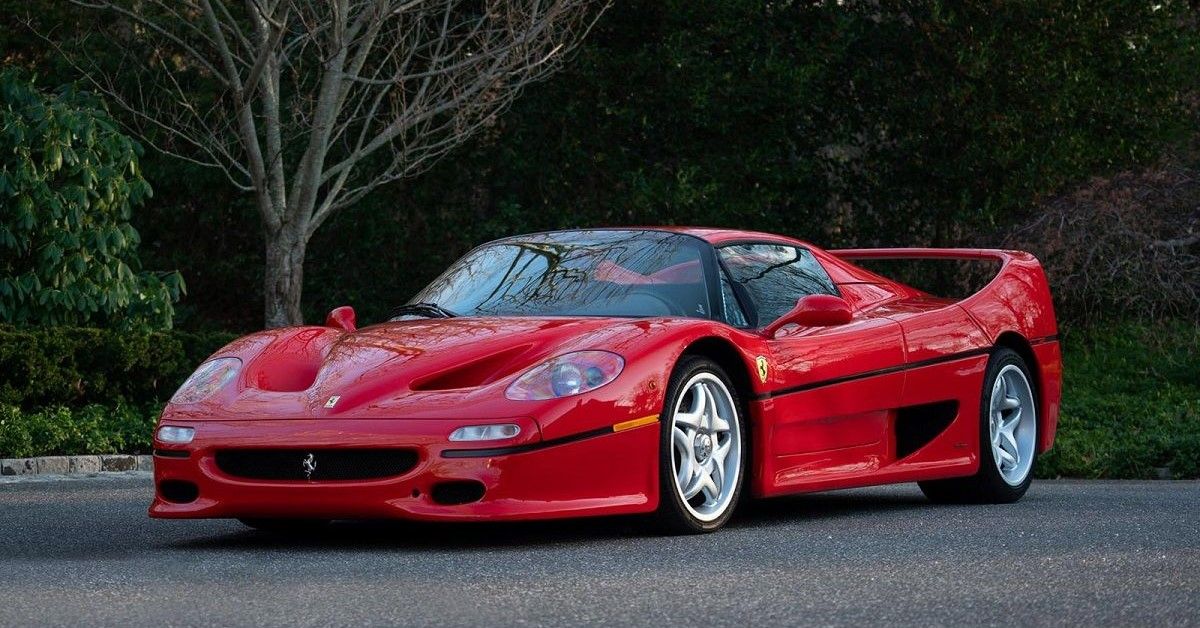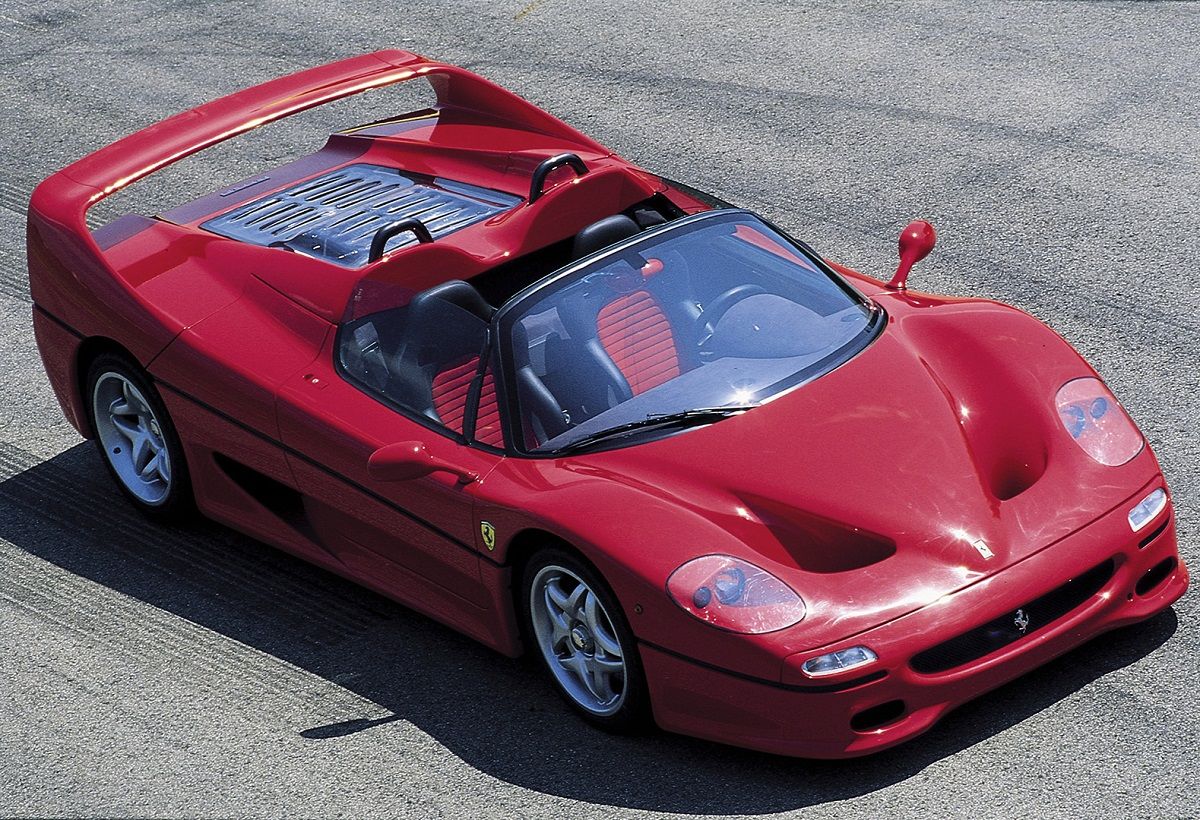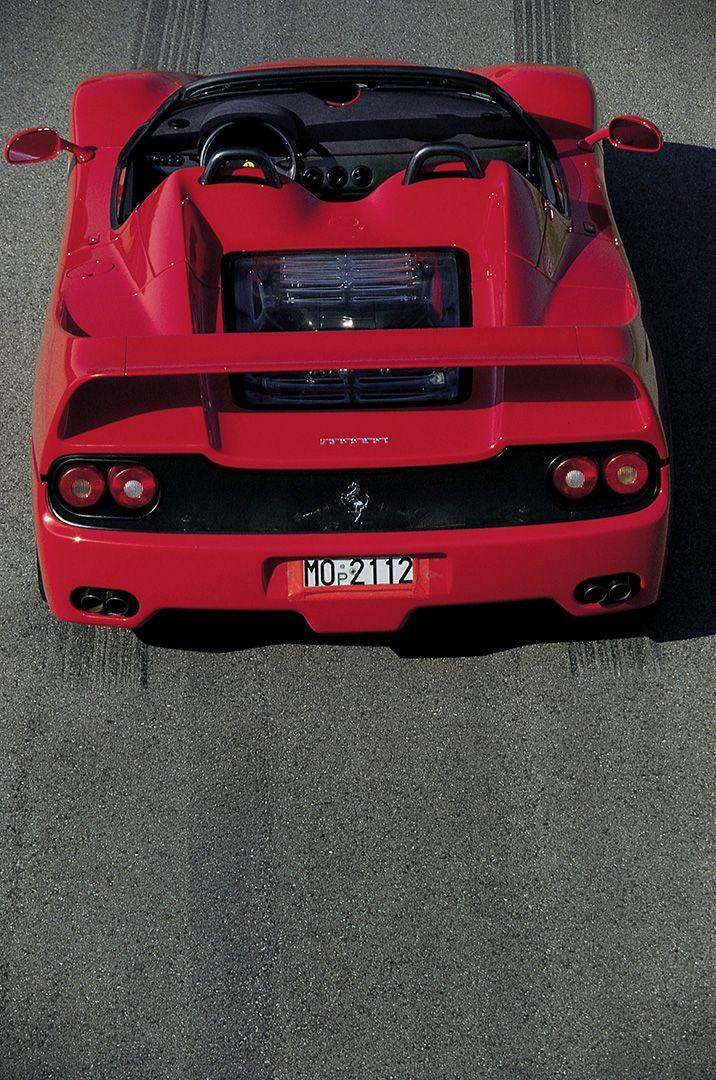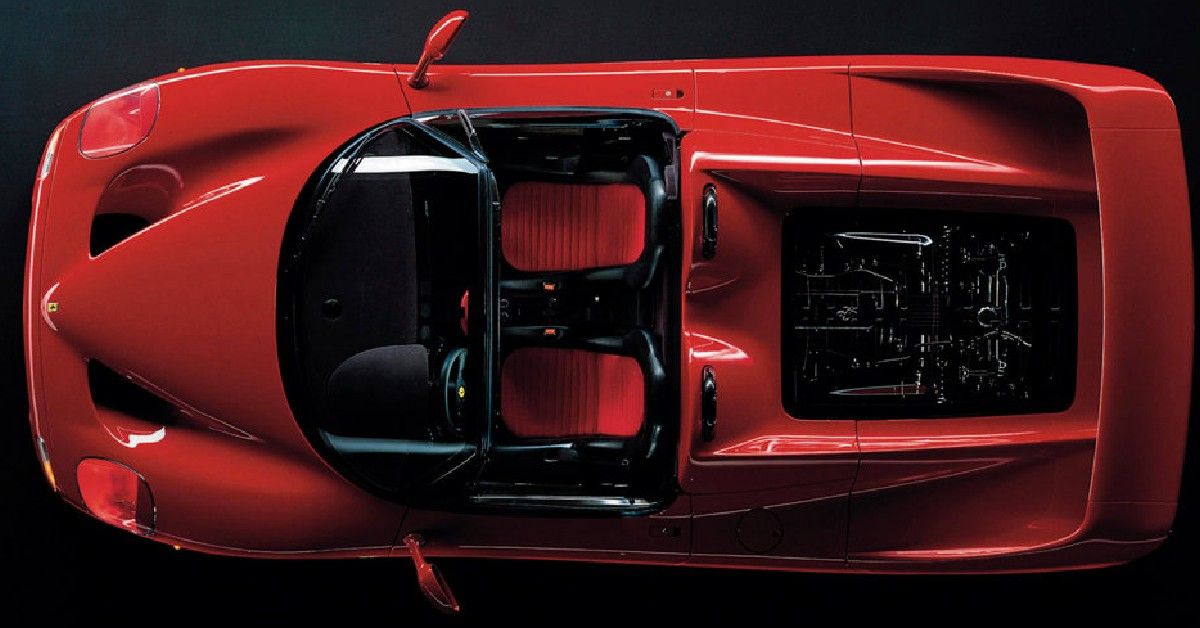Clicking and scrolling through Ferrari’s model list on its official website reminds you of its long and varied history, along with a fair share of motorsport heritage.
Unless you are a Ferrari fan you’re unlikely to remember the bewildering array of different models to have come from Maranello, but some will always stand out – the 250 GT0, the Dino, the Testarossa, the F40, the 360, and of course, the Enzo.
But we missed out on the F50 in that list to make a point – it might not always seem like the most obvious model to pluck from the Italian supercar range, but it actually might have given us a design more timeless than either the F40 or Enzo at each end of its life, and it is surely one of the better-looking supercars it has made to date.
We look at how this car may stand out on its own as both a late-90s supercar and as a model in Ferrari’s infinite racing car lineup that is on the verge of becoming something very different today.
Ferrari’s F50: A Supercar That Came A Long Way
All the way from the 250 GTO to the 288 GTO and the F40, the design of the Ferrari racing car continued to change drastically, with performance rising considerably from model to model.
It’s a rough line to draw, but one that carries the prancing horse DNA all the way from the 60s to the 90s – the archetypal supercar was by now in full swing.
Around 1987, the Ferrari F40 took center stage to celebrate 40 years of the marque and it did so in style, with a 2.9-liter twin-turbocharged V8 and 470 hp which ran from the motor in the rear to the rear wheels via a manual 5-speed gearbox.
Back at the tail end of the 80s, the F40 was an impressive machine that would top 200 mph and 60 mph in 4 seconds along the way – Lamborghini’s contemporary rival the Diablo, offered similar performance, but the Ferrari definitely captured the hearts and minds of a generation with the futuristic design.
The Ferrari F50: A Step In The Right Direction For Ferrari
Another special-edition car arrived in 1995 to celebrate 50 years of Ferrari, just as the F40 had done for their 40 years anniversary in 1987; the Ferrari F50.
This time, a car sharing the same design chromosomes but looking much more refined arrived with a surprise under the rear hood: a rear-mid-mounted naturally-aspirated 4.7-liter V12 which was F1-derived, it powered the rear wheels via a 6-speed manual transmission with 520 hp on offer.
The car was advanced in all the right areas, with the engine containing quad overhead camshafts, 5 valves per cylinder, and fuel injection all within a carbon fiber monocoque shell.
No ABS, power steering, or power brakes were on offer here, but the car could perform if you had the nerve: under 3.9 seconds to 60 mph and 202 mph top speed – only marginally faster than the F40.
Ferrari’s Enzo Was And Is A Pinnacle Of Design And Performance
Ferrari’s F40 lasted for 5 years from 1987 till 1992, from then 1995 to 1997 saw the F50 produced for 2 years and then in 2002 till 2004 the Enzo racked up another 2 years of production.
These were short lifespans, but the cars were special models, the price of an F50 at the time was around $500,000 and so out of the reach of anyone except the wealthy.
The Ferrari Enzo satisfied two goals, firstly to show off its F1 technology and drum up interest in its racing initiative, while generating income for that same purpose.
It was offered to customers who had already bought the F40 and F50 and was again up for sale at a huge $600,000 for 400 initial lucky buyers – but they were getting a lot of machine for the money in any case.
Under that rear-mid engine cover was now a 6-liter V12 with 660 hp and rear-wheel drive via an automated F1 gearbox which was a quick transmission for the time, 0-60 mph took 6.5 seconds, and top speed is quoted by Ferrari as 217 mph – not McLaren F1 fast but definitely up there with the best.
A carbon-fiber body with active aero, carbon fiber brakes, electronic active damping, and more meant that this supercar was now arguably a hypercar, with a new F1-inspired front end and smaller rear wing providing a palette cleanser to the models that had come before it.
The Ferrari F50: A Sibling Caught In The Middle Of A Prestigious Family
After looking at all 3 cars, you notice that the F50 is overlapping both the F40 and the Enzo in different ways, and perhaps looks all the better for it.
It shared a 0-60 mph acceleration time similar to both of its siblings and, while it was 15 mph down in top-end speed from the Enzo, shared the F40's same top speed.
The F50 used a manual gearbox like the F40 did instead of an automatic, but employed a V12 like the Enzo instead of a V8 twin-turbo like the F40.
Styling is more subjective; while the Enzo was a departure design-wise, the F50 stuck to the F40’s basic design which ended up looking more refined but potentially less dramatic and fresh – although in this lineup it’s possibly the better-looking car overall when you take into account the Enzo’s huge pointed nose.
You might think that the F50 being less appreciated and all would also give it an advantage: on Classic.com’s value estimate tool the F40 lists at $1.7 million, the F50 at $3 million, and the Enzo at $2.7 million on average sales figures.
Ok, so the fact that the F50 might be the surprising diamond hidden in the elite Ferrari model line doesn’t necessarily mean it comes cheap – perhaps some people have already realized that it’s a perfect storm of features and design, the likes of which we will never see again.





